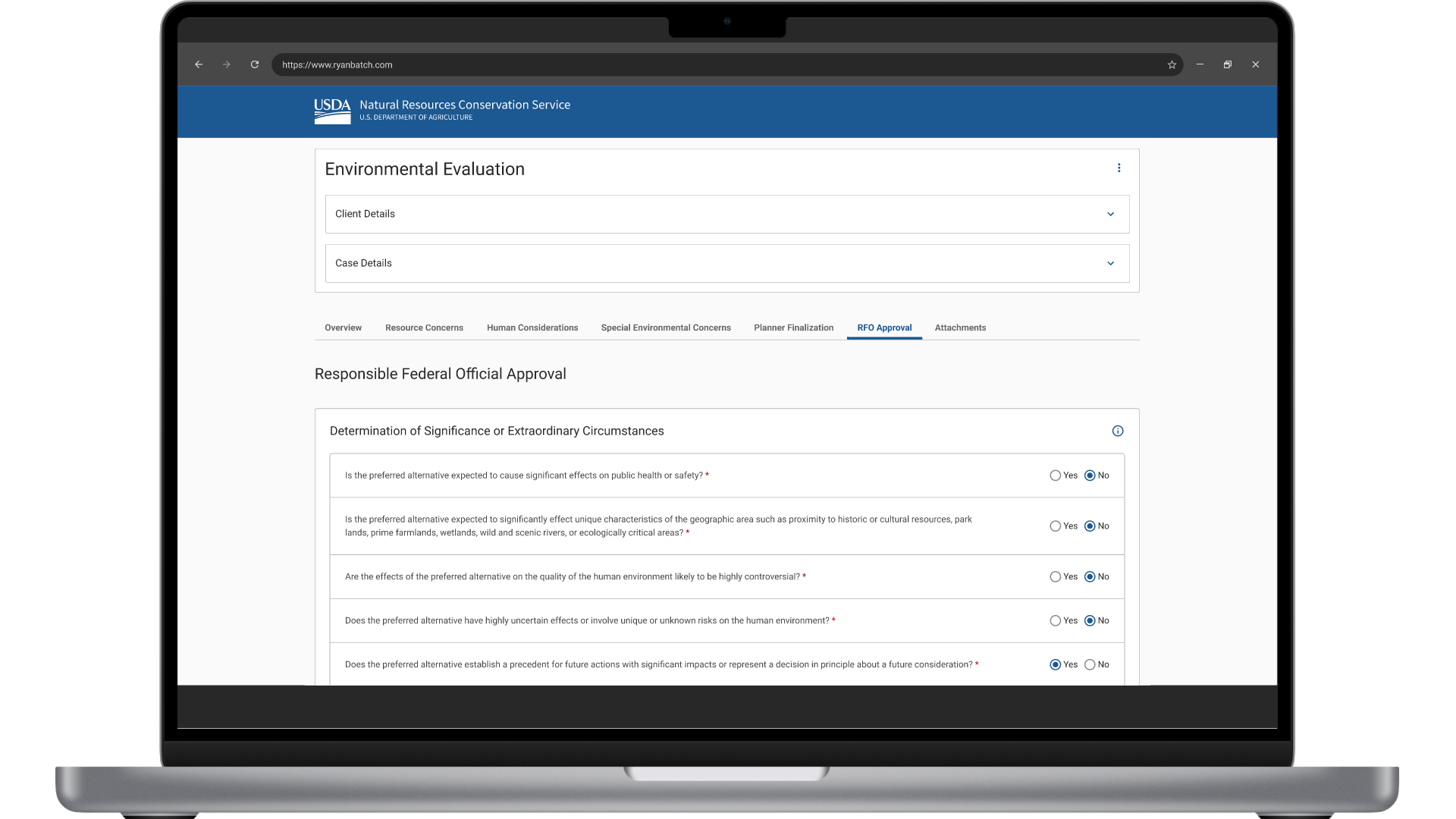CASE STUDY
Systematizing an environmental analysis tool
Context & objective
This project focused on transforming a complex, macros-enabled Excel spreadsheet into a digital product integrated directly into the agency’s system.
The original tool was used to evaluate environmental factors for client projects — a critical step in the overall workflow — but it was manual, error-prone, and disconnected from the broader system. Our goal was to create a centralized, data-driven version that improved accuracy, consistency, and reporting while maintaining the flexibility and familiarity of the original tool.
The challenge
The existing tool was an Excel spreadsheet filled with macros, conditional logic, and manual calculations. It technically worked, but it created several long-term issues:
Files were saved locally and uploaded manually to a document management system — no centralized data.
Each user performed their own “save as” version, which often led to data errors or outdated templates.
Missing or incorrect information went unnoticed because there were no built-in validations or alerts.
Data wasn’t stored in the system; only PDF exports were uploaded, so nothing could be reported or aggregated.
Users had to re-enter the same data that already existed elsewhere in the system.
This workflow not only wasted time but also limited visibility across teams. What should have been a structured evaluation was essentially a series of disconnected files with no traceable data.
The approach
We began by studying how the spreadsheet was being used — not just technically, but behaviorally. Who filled it out? When? How did they share it? What did they rely on it for?
Our process:
Workflow Audit: Mapped out every step of the existing process, from template creation to final PDF upload.
Stakeholder Interviews: Spoke with environmental analysts, case managers, and data administrators to uncover pain points and needs.
System Mapping: Identified where duplicate data already lived in the system and how we could reference it automatically.
Design Sprints: Prototyped and tested new workflows that brought the spreadsheet logic into a system-integrated web interface.
Validation Rules: Added dynamic checks for missing or incorrect entries to prevent incomplete submissions.
The new design transformed the spreadsheet into a guided, form-based workflow within the platform. It automatically pulled in known data from other modules, reducing redundant entry, and stored all inputs in the database for reporting and analytics.
The solution
The redesigned Environmental Evaluation became a system-integrated digital tool, replacing the static spreadsheet entirely.
Key improvements:
Centralized data collection directly in the system; no more local files.
Real-time validations to catch missing or incorrect data.
Auto-population of known fields to reduce redundancy.
Automated PDF generation for case documentation.
Structured data for reporting and analytics.
What had been a siloed manual process became a connected, auditable, and measurable system feature; all while preserving the workflow familiarity that users trusted.
Impact
The digital tool streamlined the environmental evaluation process and brought measurable improvements:
Zero local file storage, all evaluations completed in-system.
Fewer errors and rework thanks to built-in validation and data reuse.
Improved reporting with structured, queryable data.
Increased efficiency for analysts and reviewers.
Just as important, the project built confidence in the design process itself — showing how modernizing even a small part of a legacy workflow can unlock system-wide value.
Outcomes
Replaced disconnected spreadsheets with a centralized digital workflow
Improved data accuracy, consistency, and reusability
Enabled reporting and analytics for the first time
Reduced time and errors in environmental evaluations
Reflections
This project reinforced the value of system thinking in product design by understanding not just what users do, but where their work fits in the larger ecosystem.
By digitizing a legacy tool in a thoughtful, human-centered way, we didn’t just redesign a form, we rebuilt trust in the system itself.



